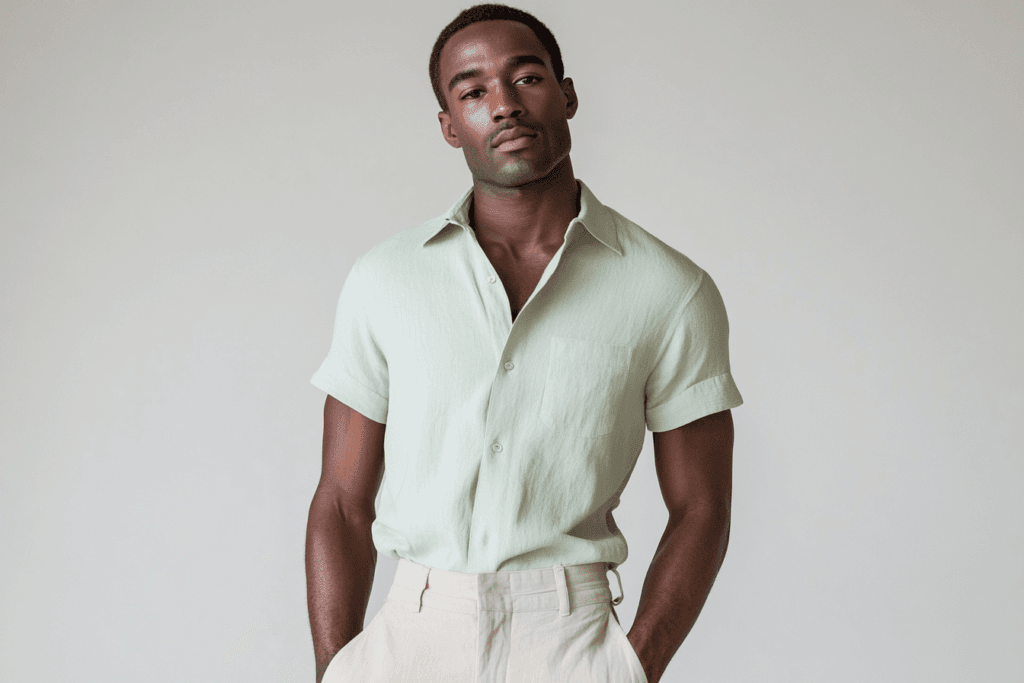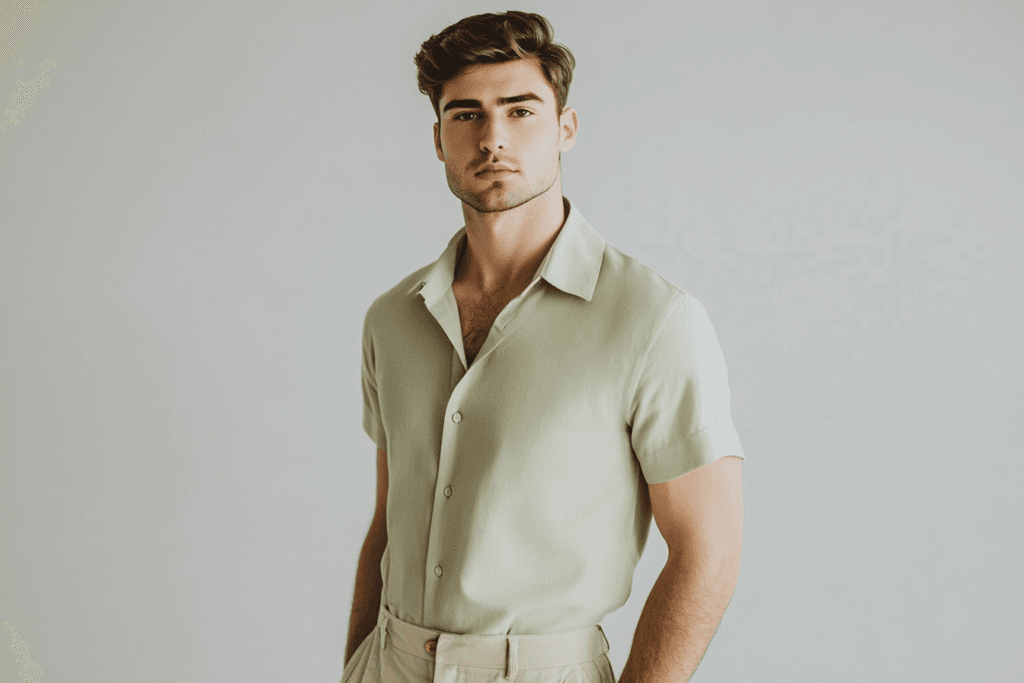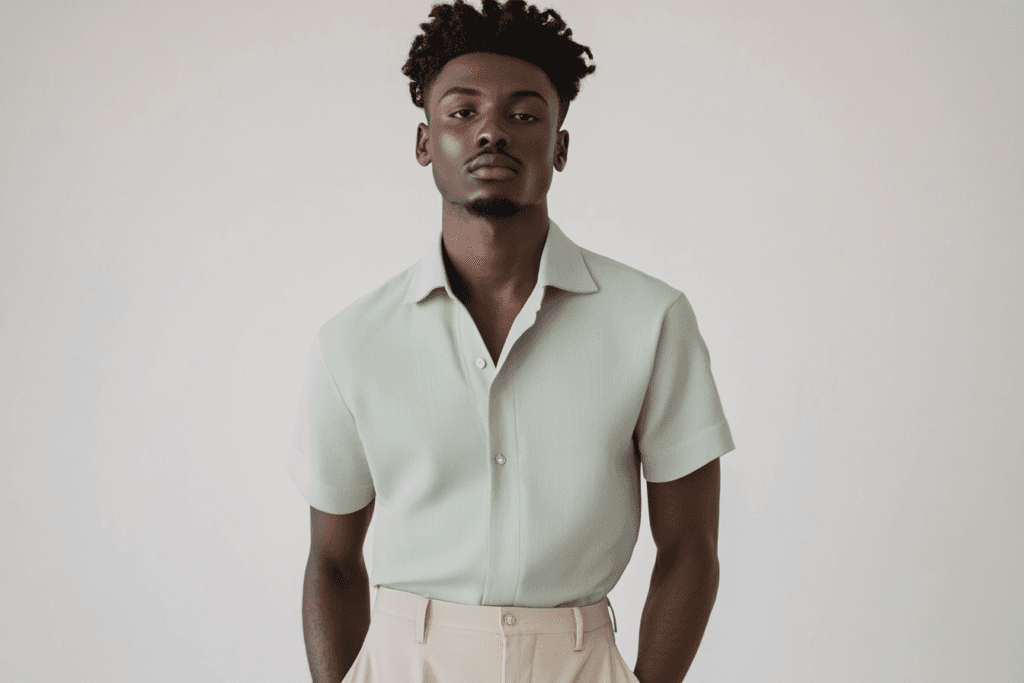
Have you ever wondered why bamboo fabric comes with a higher price tag? It’s not just about the material itself—it’s about the effort and care that go into making it. Bamboo grows fast, often ready for harvest in just three to five years, but turning it into fabric is no simple task. The process is labor-intensive and requires advanced technology. Plus, bamboo absorbs five times more carbon and produces 35 times more oxygen than trees, making it an eco-friendly superstar. These benefits come with costs, from sustainable sourcing to meeting strict environmental standards.
🌱 The demand for bamboo fabric is rising, but challenges like complex production and environmental concerns keep its price high.
Key Takeaways
- Bamboo fabric costs more because making it is complicated. It needs skilled workers and special machines.
- Buying bamboo fabric helps the planet. Bamboo grows fast, needs no pesticides, and absorbs more carbon than trees.
- Bamboo fabric is soft, breathable, and good for sensitive skin. It feels fancy and high-quality.
- Choosing bamboo fabric supports eco-friendly farming and fair work practices. This helps nature and small communities.
- Bamboo fabric costs more than cotton, but it lasts longer. It’s comfy and a smart choice for people who care about the Earth.
The Production Process

Mechanical vs. Chemical Methods
When it comes to making bamboo fabric, there are two main methods: mechanical and chemical. The mechanical process is more natural but also more expensive. It involves breaking down bamboo stalks into fibers using machines and enzymes. This method produces bamboo linen, which feels similar to hemp or flax linen. However, it’s labor-intensive and has a smaller market share because of its high cost.
On the other hand, the chemical process is faster and more common. It uses chemicals to dissolve bamboo into a pulp, which is then spun into fibers. Depending on the technique, you get different types of bamboo fabric like viscose, modal, or lyocell. Lyocell stands out because it uses an organic solvent in a closed-loop system, recycling 99% of the chemicals and water. This makes it more eco-friendly than other chemical methods.
Raw Material Preparation
Turning bamboo into fabric starts with preparing the raw material. First, the bamboo is harvested and cut into small pieces. These pieces are ground into a pulp, which is then processed further depending on the method used. For lyocell, the pulp is dissolved in a solution of water and amine oxide. This step is crucial because it determines the quality of the final fabric.
The preparation process isn’t just about machinery—it’s also about sustainability. Some methods rely heavily on chemicals and energy, which can harm the environment. Others, like the mechanical process, are more eco-friendly but require more labor and time. Companies often face challenges like fluctuating raw material prices and strict regulations, which add to the cost.
Labor and Technology
Labor and technology play a huge role in the cost of bamboo fabric. Mechanical methods require skilled workers to operate machines and handle the fibers. Labor costs can make up 20-30% of the total production expenses, and in some cases, even more. This is one reason why bamboo linen is so pricey.
Technology also impacts the cost. Advanced machinery is needed for chemical processes like lyocell production. While these machines improve efficiency, they come with high upfront costs. Companies are constantly adopting new technologies to reduce waste and improve quality, but these innovations often increase production expenses.
🛠️ The combination of labor-intensive methods and cutting-edge technology is a big reason why bamboo fabric carries a premium price tag.
Sustainability and Ethical Practices

Eco-Friendly Sourcing
Bamboo fabric stands out because of its eco-friendly sourcing. Bamboo grows incredibly fast, often reaching maturity in just three to five years. Unlike other crops, it doesn’t need pesticides or fertilizers to thrive. This makes it a sustainable choice for fabric production. Plus, bamboo has a unique ability to absorb carbon dioxide and release oxygen. Did you know bamboo absorbs five times more carbon than trees of a similar size? It also produces 35% more oxygen.
Here’s a quick look at why bamboo is an environmental superstar:
| Evidence Type | Statistic |
|---|---|
| Oxygen Production | Bamboo produces 35% more oxygen than a tree with an equivalent mass. |
| Carbon Absorption | Bamboo absorbs five times more carbon than a similar-sized stand of trees. |
These benefits make bamboo a top choice for eco-conscious consumers. However, sourcing bamboo responsibly adds to the cost. Farmers and manufacturers must follow strict guidelines to ensure sustainability, which increases production expenses.
Certifications and Standards
When you buy bamboo fabric, you’re not just paying for the material—you’re also supporting ethical practices. Many manufacturers go the extra mile to meet certifications that prove their commitment to sustainability. For example, the Forest Stewardship Council ensures bamboo comes from responsibly managed forests. Other certifications, like USDA Certified Biobased Product and OEKO-TEX®, highlight renewable materials and eco-friendly production methods.
Here’s a breakdown of some common certifications:
| Certification/Standard | Description |
|---|---|
| Forest Stewardship Council | Ensures wood comes from responsibly managed forests. |
| Program for Endorsement of Forest Certification | Promotes sustainable forest management globally and locally. |
| USDA Certified Biobased Product | Identifies products made from renewable materials. |
| STeP by OEKO-TEX® | Communicates environmental measures in the textile industry. |
| Ecolabel | Recognizes products with low environmental impact throughout their life-cycle. |
These certifications don’t come cheap. Companies invest heavily in meeting these standards, which adds to the final price of bamboo fabric.
Environmental Benefits
Bamboo fabric production offers significant environmental benefits. For starters, bamboo sequesters an impressive 62 tonnes of carbon dioxide per hectare annually. That’s four times more than a young forest! It also requires less water compared to cotton, making it a more sustainable option.
Here’s how bamboo stacks up environmentally:
| Environmental Benefit | Value |
|---|---|
| Carbon dioxide sequestered per hectare | 62 tonnes per year |
| Carbon dioxide sequestered by young forest | 15 tonnes per hectare |
| Oxygen production compared to trees | 35% more than a tree of equivalent mass |
These benefits explain why bamboo fabric is a favorite among eco-conscious buyers. However, achieving these results requires careful planning and investment, which drives up the cost.
🌍 Choosing bamboo fabric means you’re supporting a product that’s better for the planet. While it’s pricier, the environmental benefits make it worth every penny.
Quality and Durability
Unique Benefits of Bamboo Fabric
Bamboo fabric offers a range of unique benefits that make it stand out. First, it’s incredibly soft, which feels amazing on your skin. If you have sensitive skin, you’ll love how gentle it is. It’s also breathable and moisture-wicking, keeping you cool and dry even on hot days. Plus, it’s hypoallergenic and resistant to dust mites and mold, making it a great choice for people with allergies.
Another impressive feature is its antibacterial properties. Bamboo fabric naturally prevents bacterial growth, which helps it stay fresh longer. It’s also thermo-regulating, meaning it adapts to your body temperature. Whether it’s warm or chilly, this fabric keeps you comfortable. Despite being so soft, it’s surprisingly strong, which adds to its appeal.
🌟 These benefits make bamboo fabric a top choice for anyone looking for comfort, functionality, and quality in their clothing or home textiles.
Longevity and Performance
When you invest in bamboo fabric, you’re getting a product that lasts. Its fibers are naturally durable, so it holds up well over time. Unlike some fabrics that wear out quickly, bamboo fabric maintains its softness and strength even after multiple washes. This means you won’t have to replace it as often, saving you money in the long run.
Its performance is equally impressive. Bamboo fabric resists pilling, which keeps it looking new for longer. It also retains its shape and color, so your clothes or bedding won’t stretch out or fade easily. Whether you’re using it for everyday wear or special occasions, it delivers consistent quality.
Premium Appeal
Bamboo fabric has a premium appeal that’s hard to ignore. Its luxurious texture and high-end features make it a favorite among eco-conscious and style-savvy consumers. When you choose bamboo fabric, you’re not just buying a product—you’re making a statement. It shows you value sustainability, quality, and comfort.
This fabric also feels exclusive because of its unique properties. Its combination of softness, durability, and eco-friendliness sets it apart from other materials. Owning bamboo fabric feels like a treat, and it’s worth every penny for the experience it provides.
✨ Choosing bamboo fabric means you’re investing in a product that’s as luxurious as it is practical.
Market Dynamics
Supply and Demand
The rising demand for bamboo fabric plays a big role in its price. More people are looking for sustainable and eco-friendly textiles, and bamboo fits the bill perfectly. It’s hypoallergenic, skin-friendly, and breathable, which makes it a favorite for health-conscious buyers. The fashion industry is also shifting toward sustainable practices, with many brands choosing bamboo to reduce their environmental impact.
Interestingly, women drive much of this demand. Eco-friendly fashion and comfortable clothing are becoming more popular in the women’s market, making it a key segment for bamboo fabric. However, meeting this growing demand isn’t easy. Bamboo fabric production is still relatively small compared to other materials like cotton. This imbalance between supply and demand pushes prices higher.
🌟 The increasing awareness of bamboo fabric’s benefits is great for the planet, but it also means higher costs for you as a consumer.
Economies of Scale
Bamboo fabric production hasn’t yet reached the scale of industries like cotton. Cotton, for example, produces 27 million tons annually, benefiting from massive infrastructure and efficient processes. This allows cotton to be produced at a much lower cost per unit. Bamboo, on the other hand, is still a smaller industry. Without large-scale production, it’s harder to lower costs.
For bamboo fabric to compete, manufacturers need to invest in expanding production. But scaling up takes time and money. Until then, the smaller production scale keeps prices higher.
Competition and Pricing
Competition in the textile market also affects bamboo fabric’s price. While bamboo offers unique benefits, it competes with cheaper alternatives like cotton and synthetic fabrics. These materials have been around longer and dominate the market. To stand out, bamboo fabric brands often emphasize quality, sustainability, and durability.
This premium positioning comes at a cost. Companies invest in marketing, certifications, and eco-friendly practices to attract conscious consumers like you. These efforts add to the final price, making bamboo fabric a luxury choice compared to other options.
💡 When you choose bamboo fabric, you’re paying for more than just the material. You’re supporting a product that values sustainability and quality over mass production.
Comparison with Other Fabrics
Bamboo vs. Cotton
When comparing bamboo fabric to cotton, you’ll notice some key differences. Bamboo fabric is softer and feels luxurious, often compared to silk. It’s also moisture-wicking and hypoallergenic, making it a great choice for sensitive skin. Cotton, on the other hand, is highly durable and breathable, especially when cared for properly.
Here’s a quick comparison:
| Fabric Type | Pros | Cons |
|---|---|---|
| Bamboo | Softness, moisture-wicking, hypoallergenic | Less durable compared to high-quality cotton |
| Cotton | Breathability, high durability when cared for | Can irritate sensitive skin if not organic |
While bamboo fabric offers comfort and eco-friendliness, cotton’s durability makes it a long-lasting option. Your choice depends on what you value more—luxury or longevity.
Bamboo vs. Synthetic Fabrics
Synthetic fabrics like polyester are often cheaper and widely available, but they come with significant environmental drawbacks. Bamboo fabric, while more expensive, is a better choice for sustainability. It’s biodegradable and requires less water to produce. Synthetic fabrics, on the other hand, rely on petroleum-based processes and are non-biodegradable, contributing to pollution.
Here’s how they compare:
| Aspect | Bamboo Fabric | Synthetic Fabrics (e.g., Polyester) |
|---|---|---|
| Manufacturing Process | Involves intensive chemical processes, often using toxic substances like caustic soda. | Typically involves petroleum-based processes. |
| Environmental Impact | Recent improvements in chemical management, but still significant waste. | High carbon footprint and non-biodegradable. |
| Cost of Production | Generally less costly to produce than cotton. | Often cheaper due to mass production techniques. |
| Resource Requirements | Requires less water and no irrigation. | High water usage, especially in cotton production. |
If you’re looking for a fabric that aligns with eco-friendly values, bamboo fabric is the clear winner.
Bamboo vs. Other Sustainable Fabrics
Bamboo fabric stands out even among other sustainable options. It grows quickly without pesticides and absorbs more carbon dioxide than most plants. Compared to cotton, it’s softer and more moisture-wicking. However, it’s less durable than high-quality cotton and may not last as long.
| Aspect | Bamboo Fabric | Cotton Fabric |
|---|---|---|
| Eco-Friendly Potential | Grows quickly, no pesticides needed | High water use, pesticides for non-organic |
| Moisture-Wicking | Absorbs and evaporates sweat efficiently | Varies, generally less effective |
| Softness | Smooth, often compared to silk | Varies, generally less soft |
| Antimicrobial | Naturally resistant to bacteria | Not inherently antimicrobial |
| Hypoallergenic | Ideal for sensitive skin | Can irritate sensitive skin |
| Durability | Less durable than high-quality cotton | Generally more durable |
| End-of-Life | Fully biodegradable | Biodegradable, but blends can reduce this advantage |
While other sustainable fabrics have their strengths, bamboo fabric’s unique combination of softness, eco-friendliness, and hypoallergenic properties makes it a standout choice.
🌿 Choosing bamboo fabric means you’re prioritizing comfort and sustainability, even if it comes at a higher cost.
Bamboo fabric may seem pricey, but its cost reflects the value it brings. Its production involves intricate processes and responsible farming practices, ensuring sustainability. Bamboo grows quickly, needs no irrigation, and thrives without pesticides, making it an eco-friendly choice. Plus, sustainable bamboo farming supports rural communities worldwide.
Here’s why its cost is justified:
- Bamboo’s rapid growth and low resource needs make it a sustainable option.
- Responsible farming and manufacturing add complexity to production.
- Compared to cotton, bamboo offers a greener alternative for fabric production.
When you choose bamboo fabric, you’re investing in quality, comfort, and a healthier planet.
FAQ
Why does bamboo fabric cost more than cotton?
Bamboo fabric involves a more complex production process. It requires advanced technology, skilled labor, and eco-friendly practices. Cotton benefits from large-scale production, making it cheaper. Bamboo’s sustainability and unique qualities justify its higher price.
🌱 Tip: Bamboo fabric is softer and more eco-friendly than cotton, making it worth the investment!
Is bamboo fabric really sustainable?
Yes, bamboo grows quickly without pesticides or irrigation. It absorbs more carbon dioxide and produces more oxygen than trees. However, some production methods use chemicals, so look for certified eco-friendly bamboo fabrics.
✅ Note: Certifications like OEKO-TEX® ensure sustainable and ethical production.
Why is bamboo fabric considered luxurious?
Its silky softness, breathability, and hypoallergenic properties make it feel premium. Bamboo fabric also resists odors and bacteria, adding to its appeal. These qualities, combined with its eco-friendliness, make it a luxury choice.
Does bamboo fabric last long?
Yes, bamboo fabric is durable and resists pilling. It maintains its softness and shape even after multiple washes. While it may not outlast high-quality cotton, its longevity makes it a reliable option.
Are there affordable alternatives to bamboo fabric?
If bamboo fabric feels too pricey, consider blends of bamboo with cotton or other materials. These options retain some benefits of bamboo while being more budget-friendly.
💡 Pro Tip: Check for sales or discounts on bamboo products to save money!
